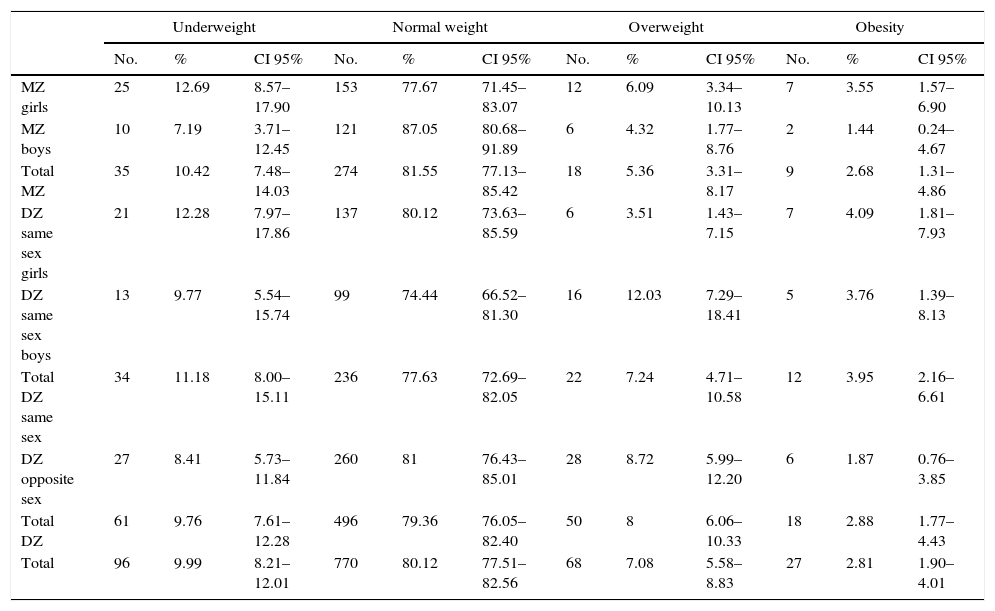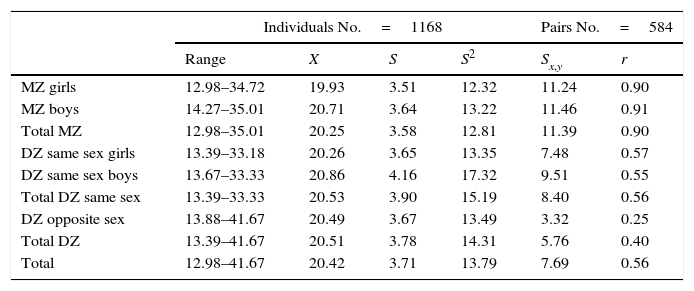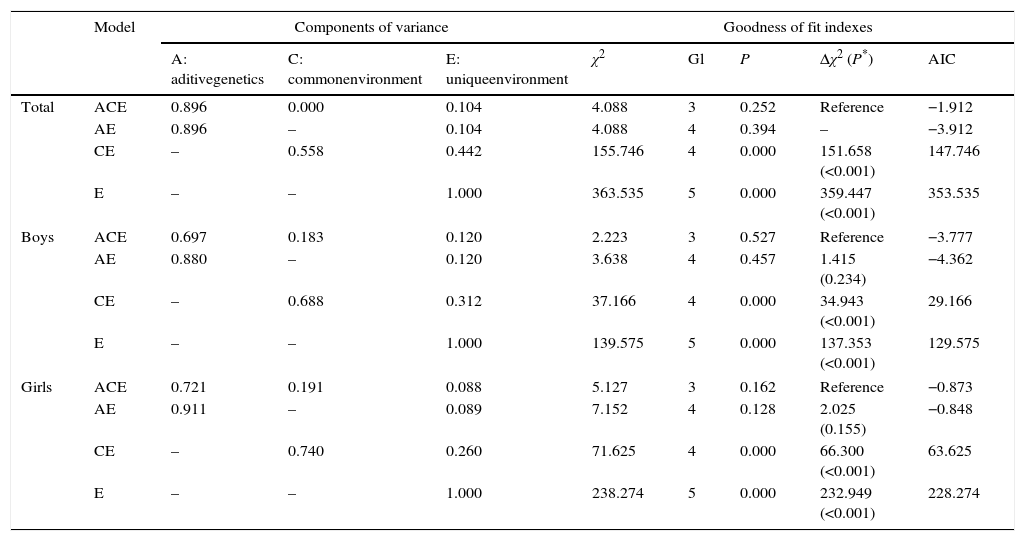Twin and family studies support large genetic influences on variability in body mass index (BMI), with heritability estimates ranging from 47% to over 90%. Our objective was to study the relative contributions of genetics and environment to BMI, evaluating sex differences, in an adolescent twin sample from Valencia, Spain.
Material and methodsFive hundred eighty-four pairs of adolescent twins between 13 and 18 years of age completed the study (82 monozygotic [MZ] and 87 dizygotic [DZ] pairs of male twins, 118 MZ and 102 DZ pairs of female twins, and 195 opposite-sex pairs of DZ twins). To determine zygosity, teachers responded a questionnaire on physical similarity. They also measured the participant's height and weight. BMI was calculated and weight status was determined according to age. We used twin models to assess genetic and environmental (common and unique) factors affecting BMI.
ResultsThere was a 7.1% frequency of overweight and 2.8% of obesity. The estimated heritability of BMI was 88.0% in boys and 72.1% in girls, with the remaining variance attributable to non-shared environment in boys (12.0%) and 8.8% in girls. It was only in girls that common environment had an effect on BMI.
ConclusionsGenetics appears to play an important role in explaining the variability in BMI in the adolescence, with slight variations between boys and girls. Common environmental factors exert their influence on BMI only in girls.
Los estudios familiares y gemelares han demostrado que los factores genéticos son responsables del 47–90% de la variancia interindividual del índice de masa corporal (IMC). El objetivo de la presente investigación fue evaluar los factores genéticos y ambientales que contribuyen a las diferencias en el IMC, y en función del sexo, en una muestra gemelar de escolares de la Comunidad Valenciana.
Material y métodoQuinientas ochenta y cuatro parejas de gemelos de 13 a 18 años de edad completaron el estudio: 82 parejas monocigóticas (MC) y 87 dicigóticas (DC) varones, 118 (MC) y 102 (DC) mujeres, y 195 parejas (DC) de sexo opuesto. Para determinar la cigosidad, los profesores rellenaron un cuestionario de similitud física y pesaron y tallaron a los participantes. Se calculó el IMC y se estableció el estado nutricional según la edad. Se llevó a cabo una modelización del IMC que permitió establecer los componentes genéticos y ambientales (comunes y específicos) de su variancia.
ResultadosSe observó un 7,1% de sobrepeso y un 2,8% de obesidad. La heredabilidad del IMC se estimó en un 88% en niños y en un 72,1% en niñas. Los factores ambientales específicos explicaron el resto de la variancia del IMC (en niños el 12% y en niñas el 8,8%). Solo en las niñas apareció una contribución de los factores ambientales comunes.
ConclusionesLa influencia genética sobre el IMC es intensa durante la adolescencia, con ligeras variaciones en función del sexo, siendo solo las niñas vulnerables a las influencias ambientales comunes.











